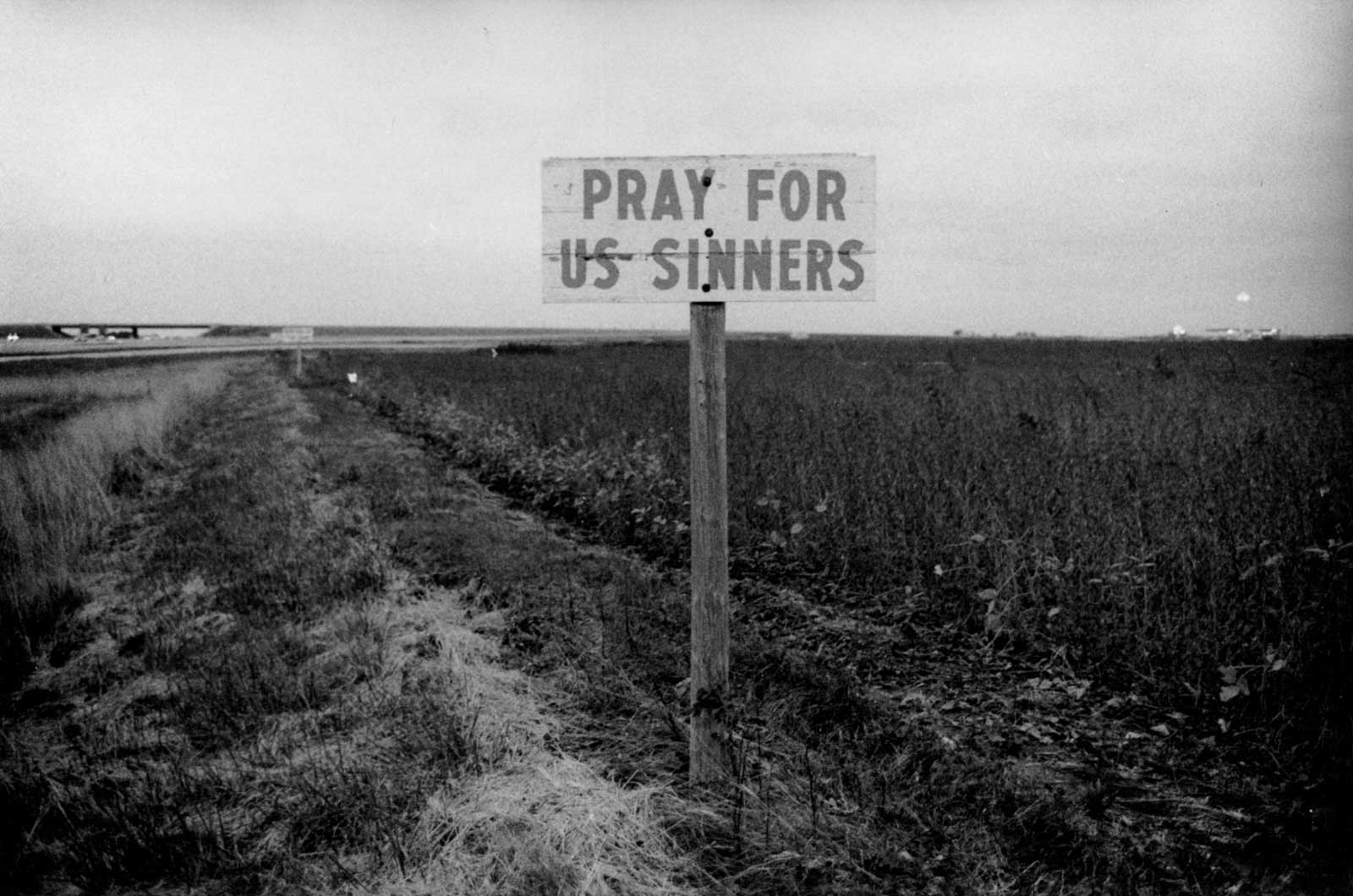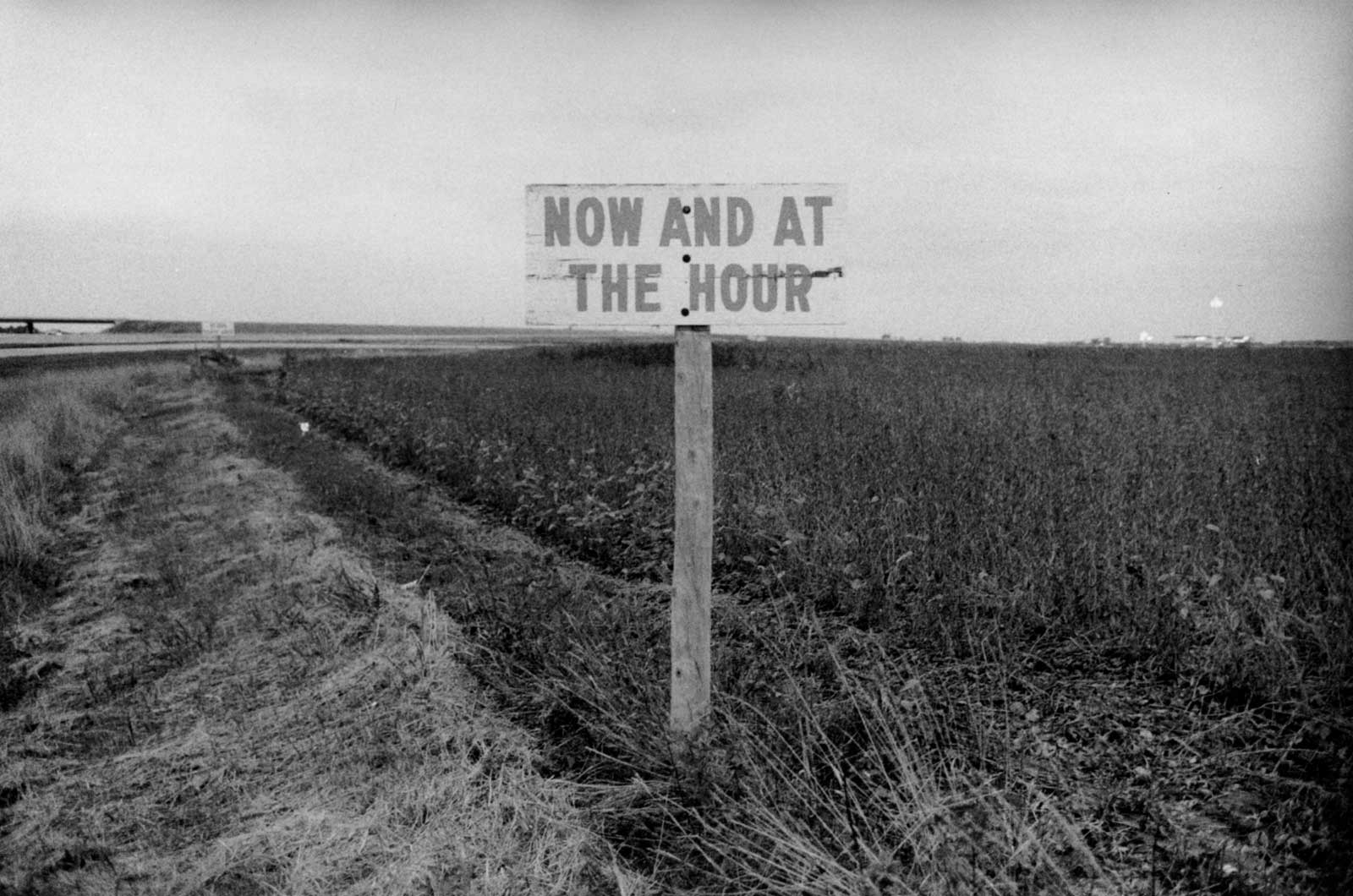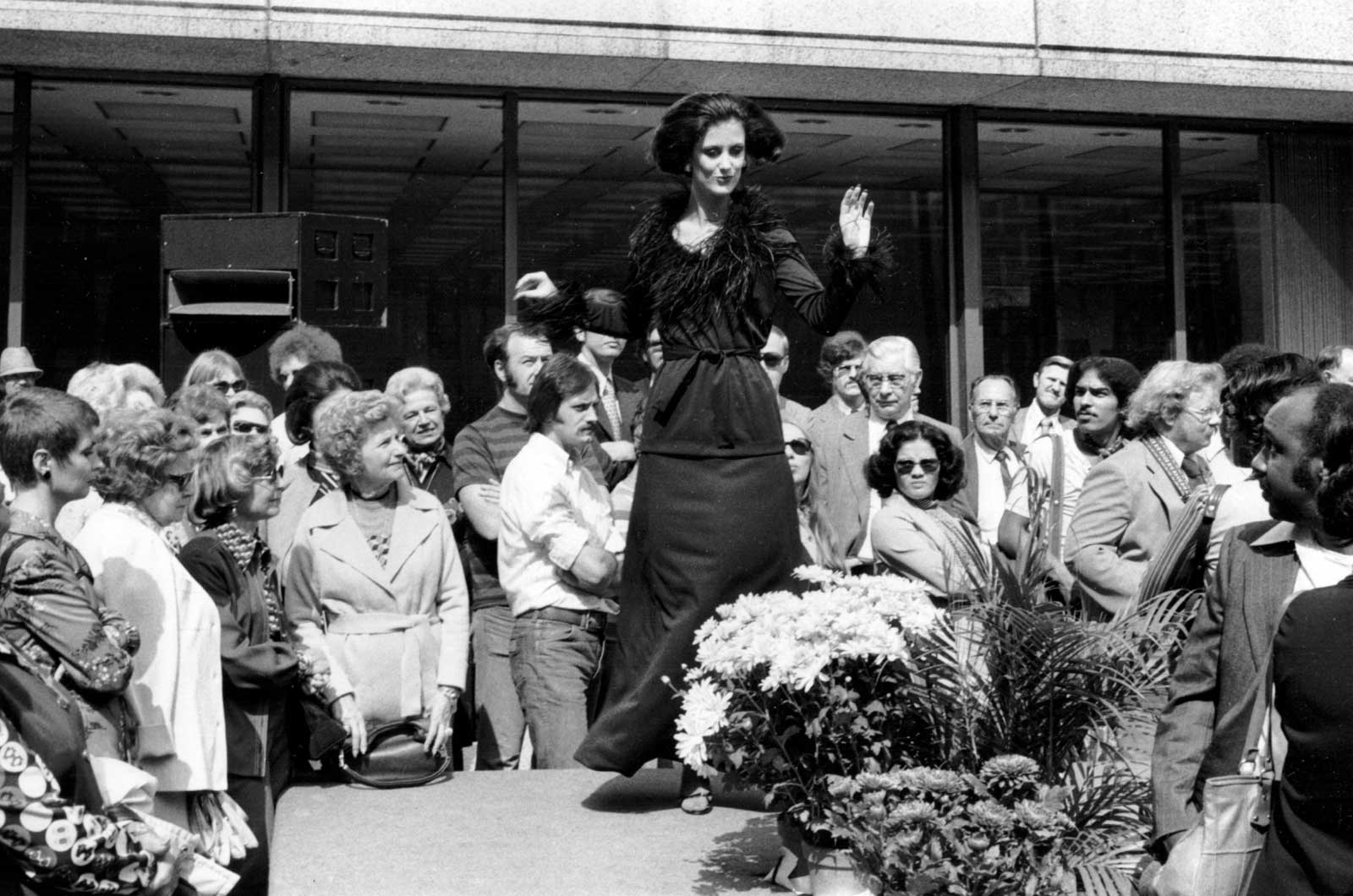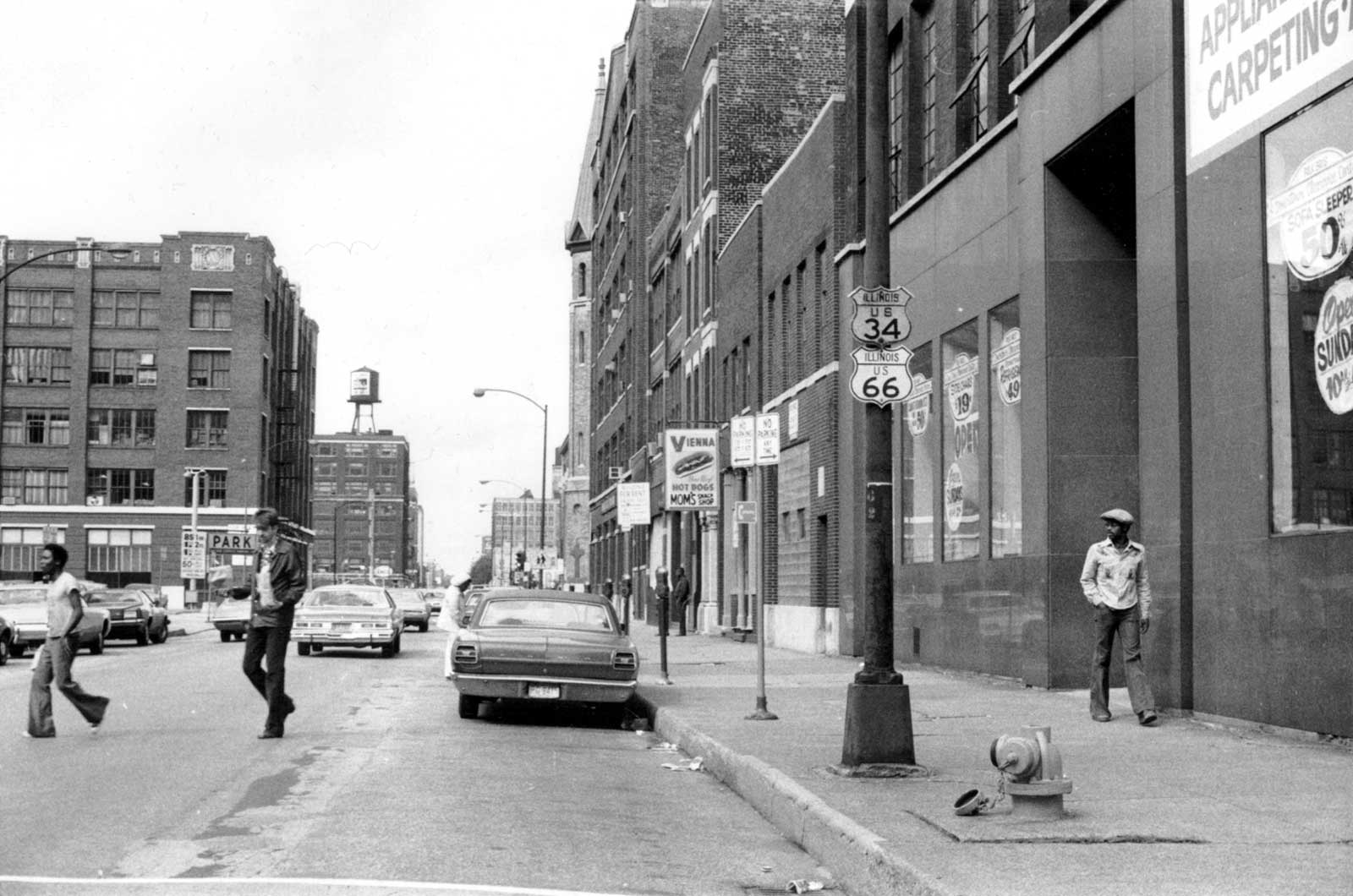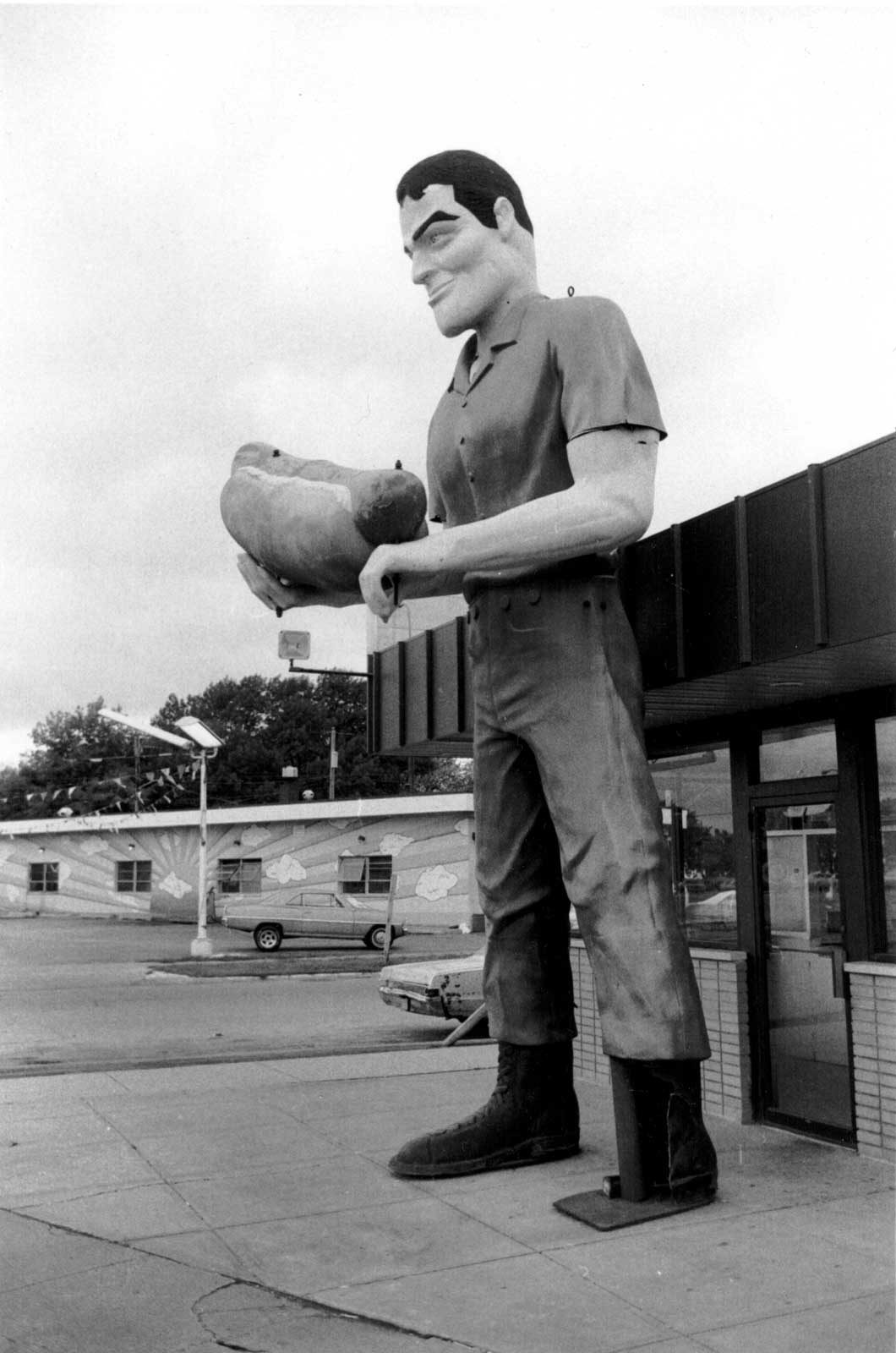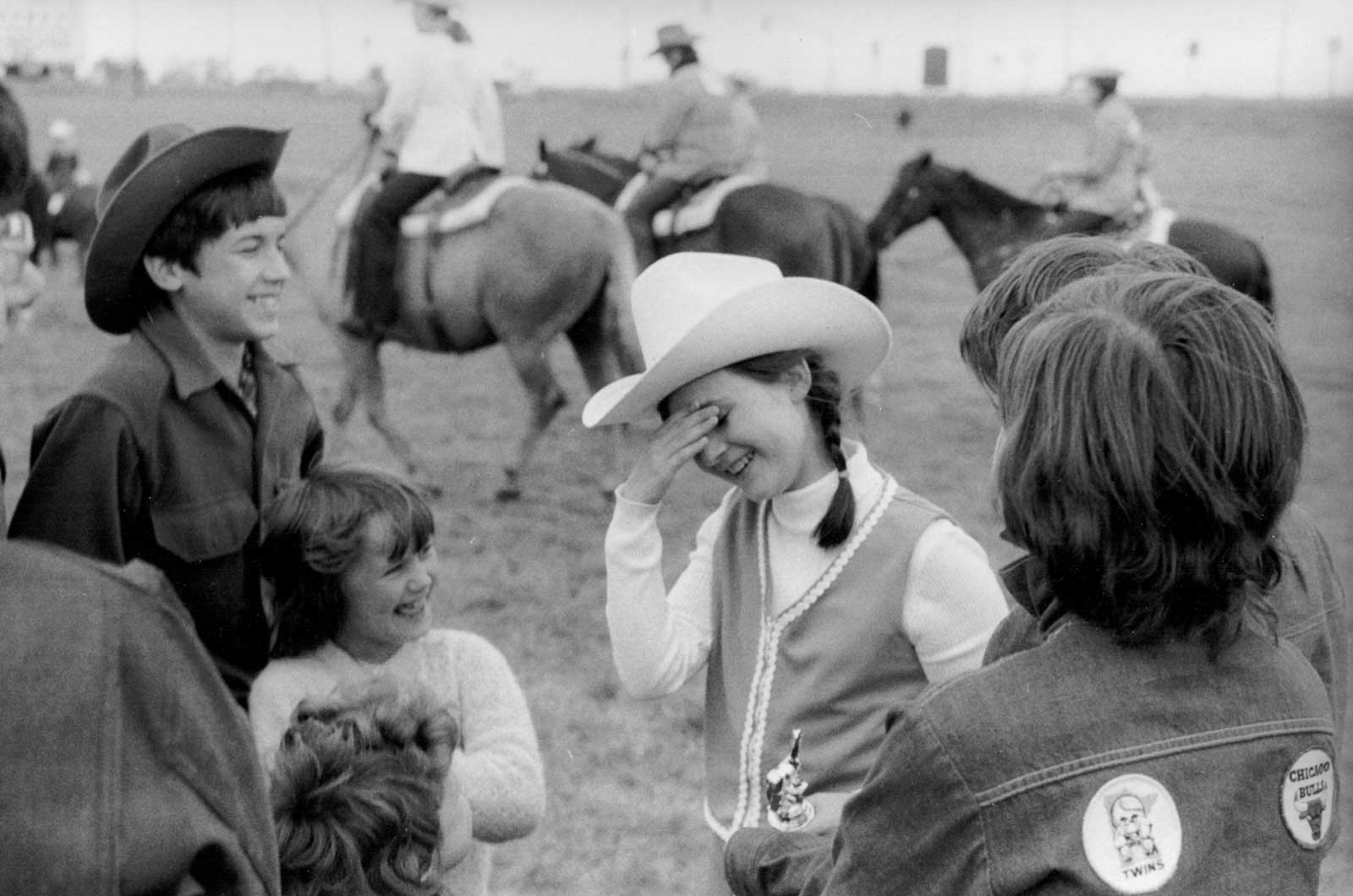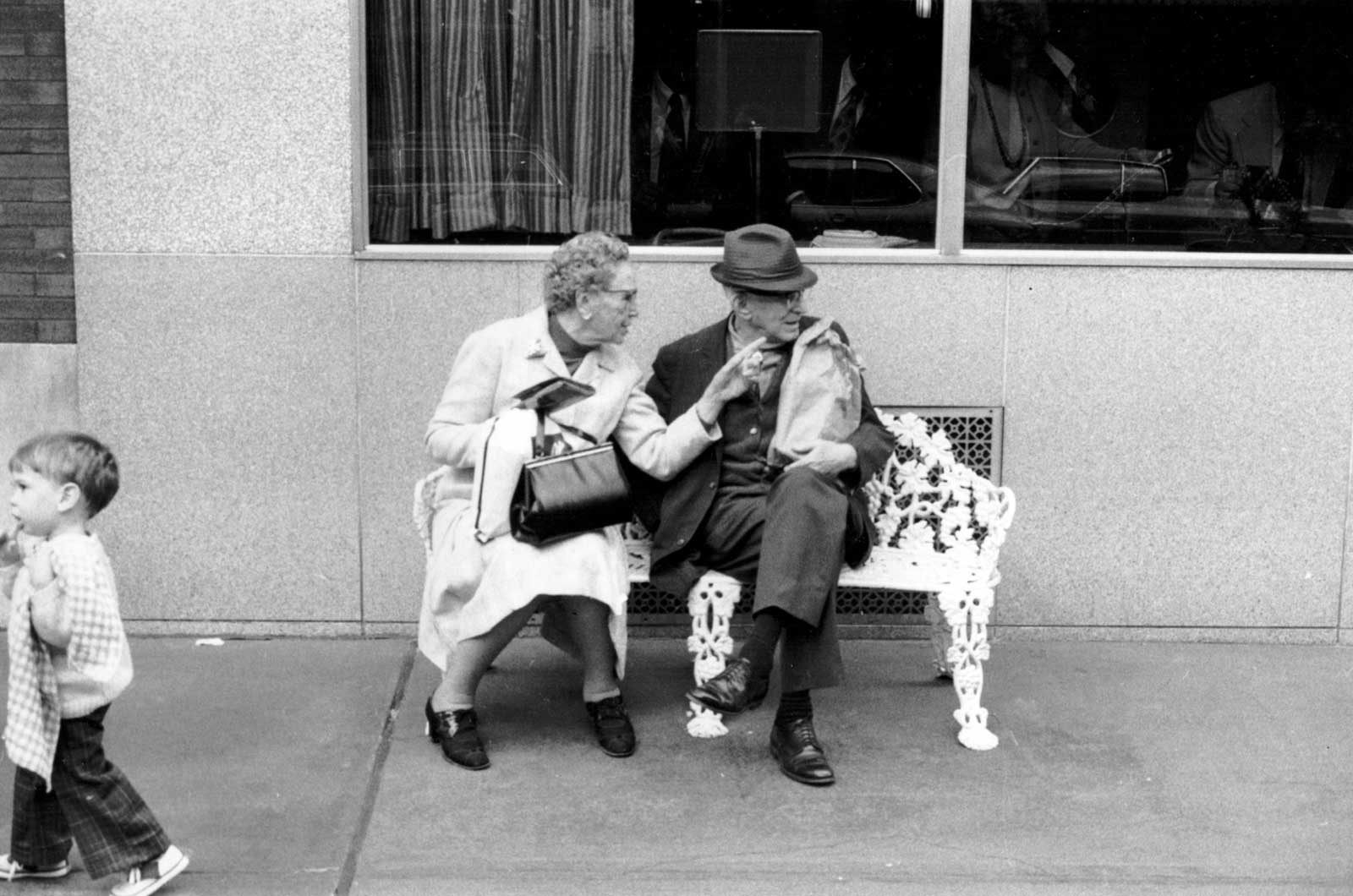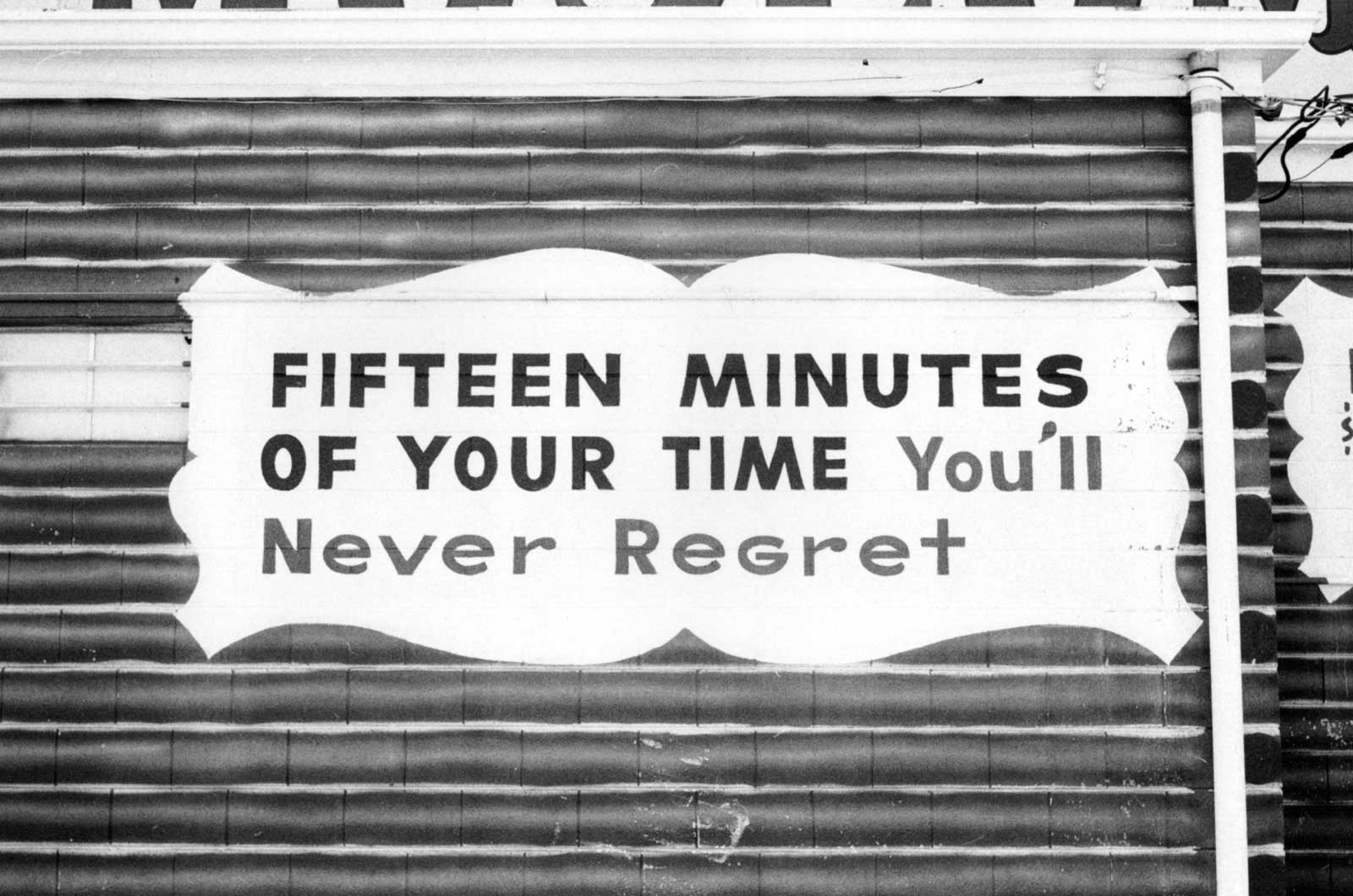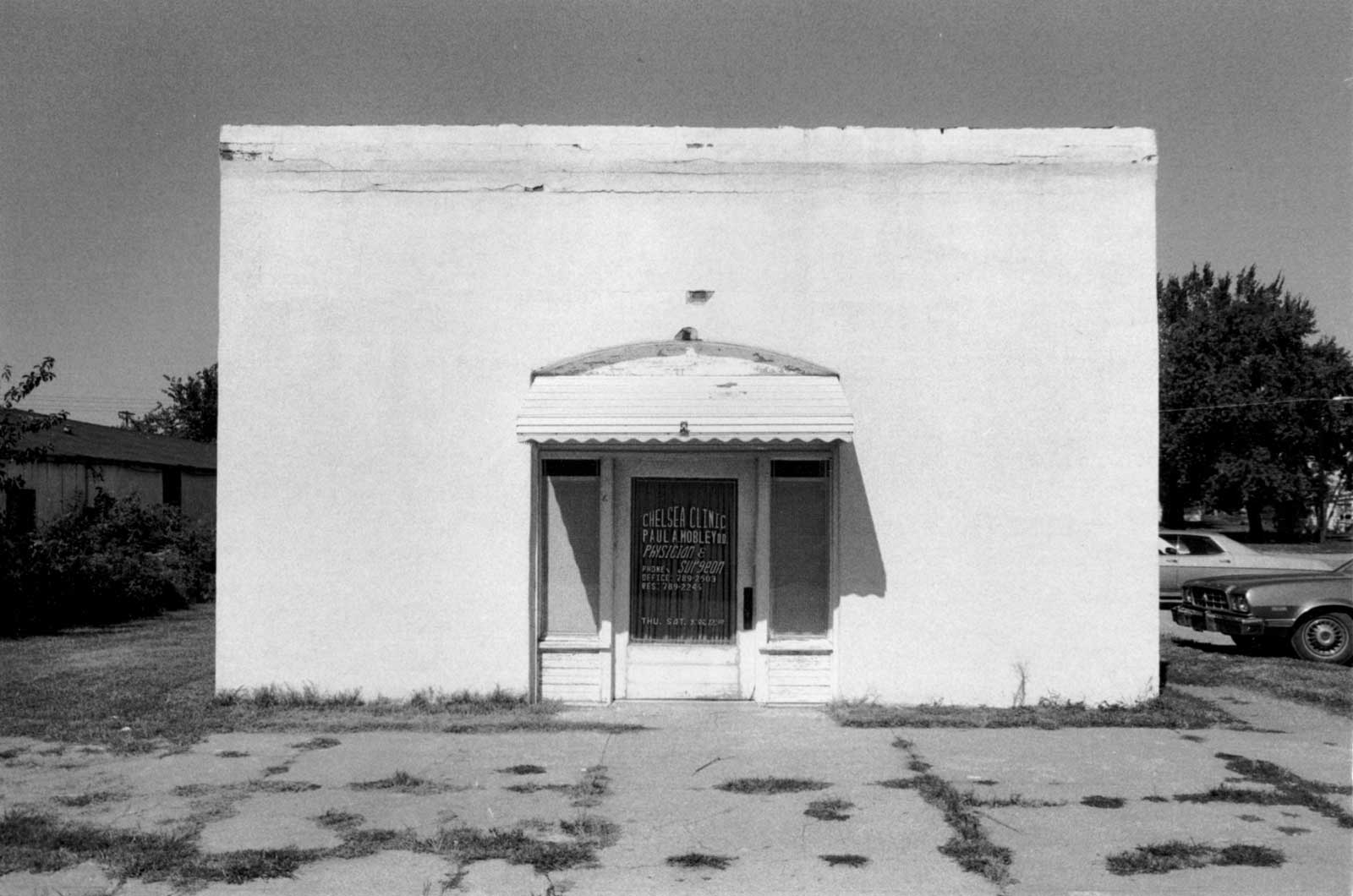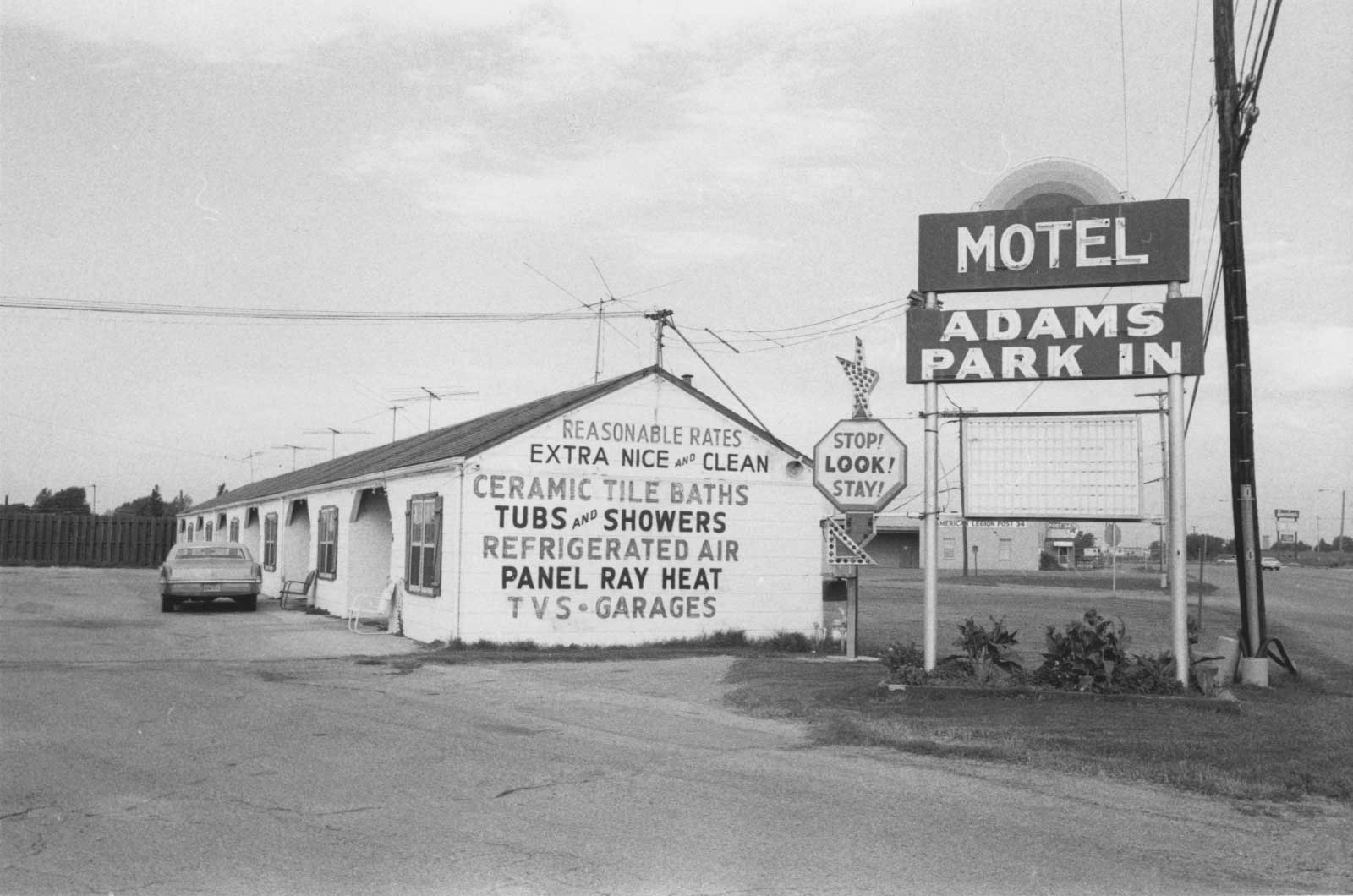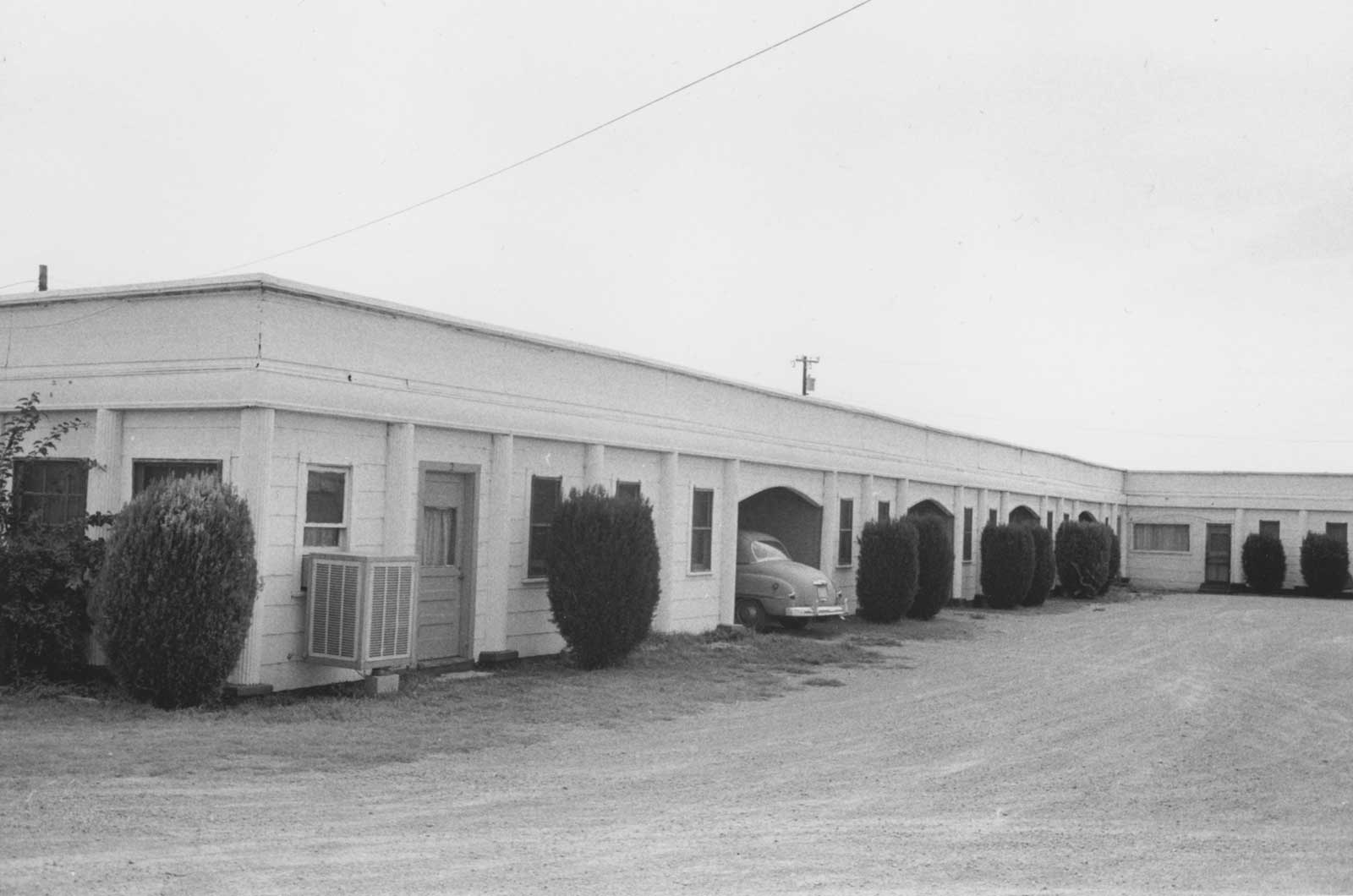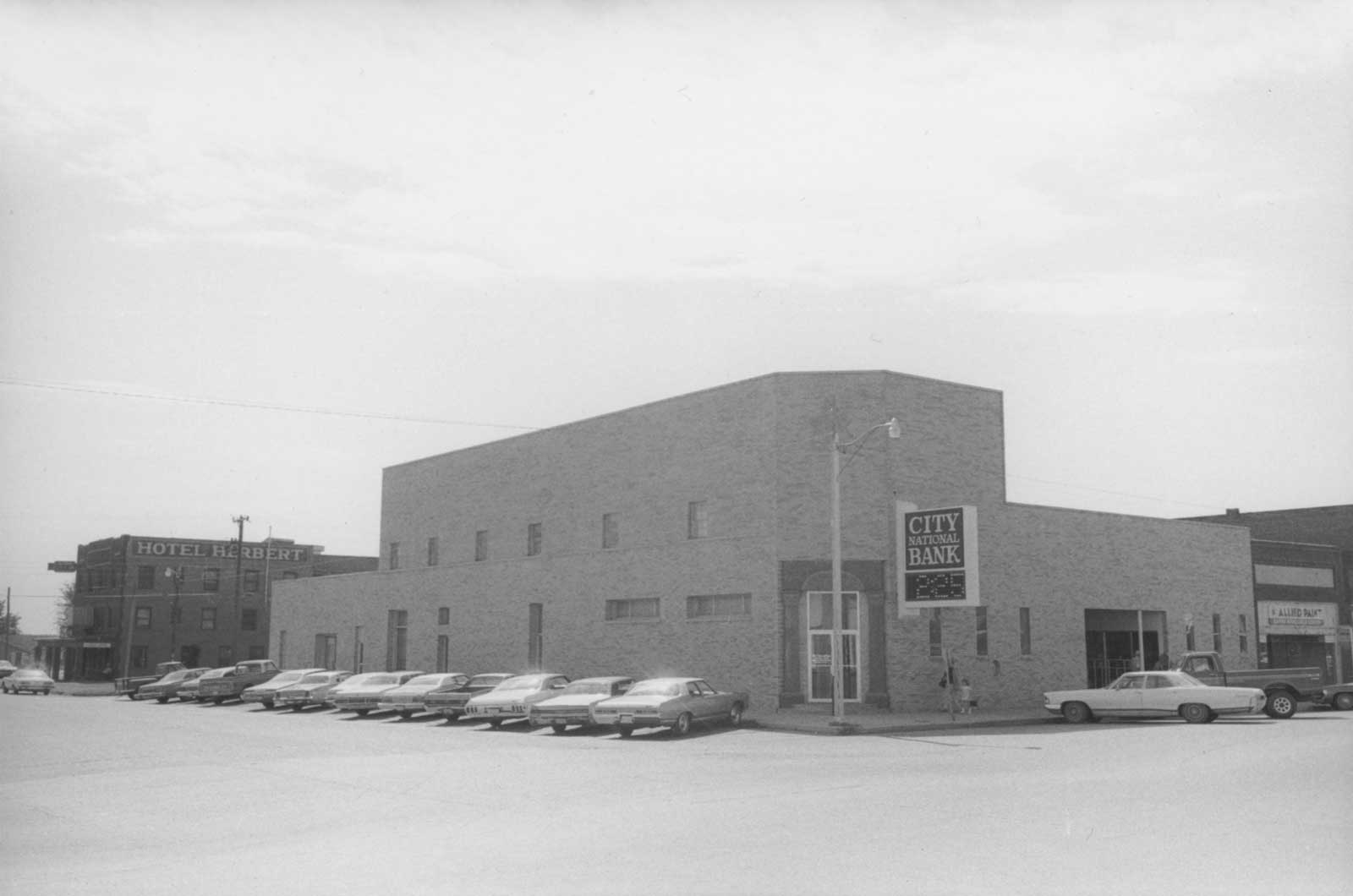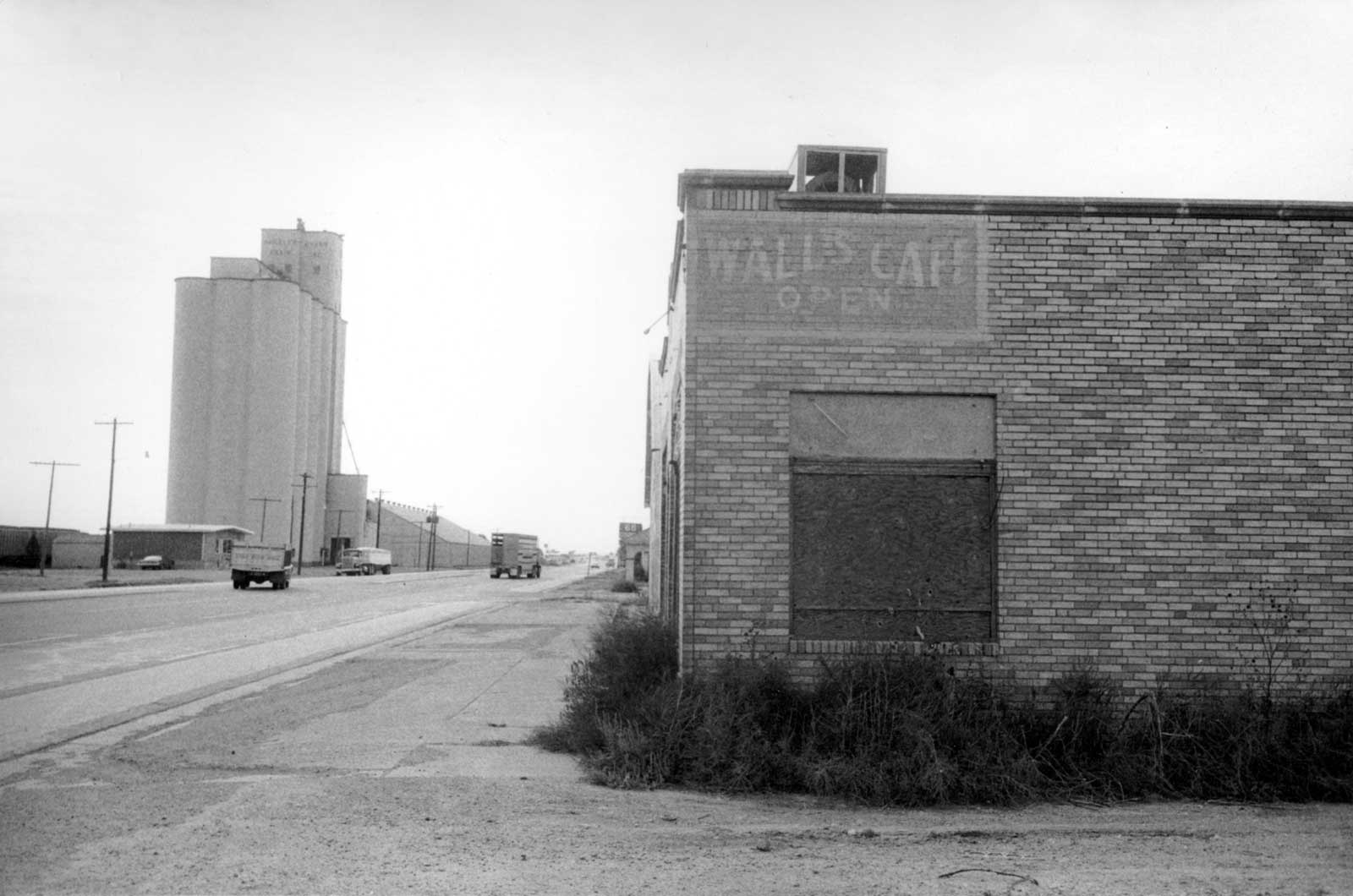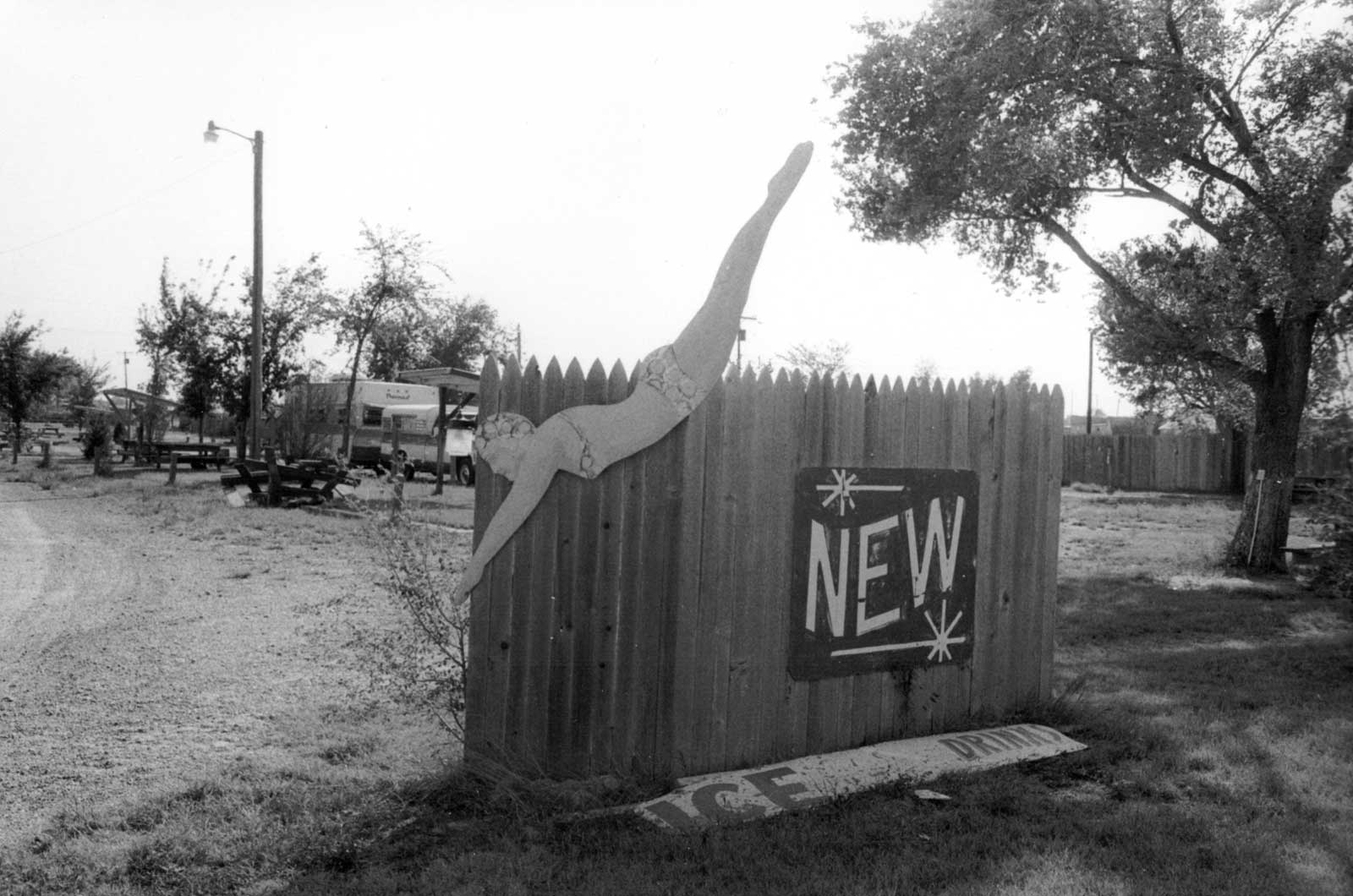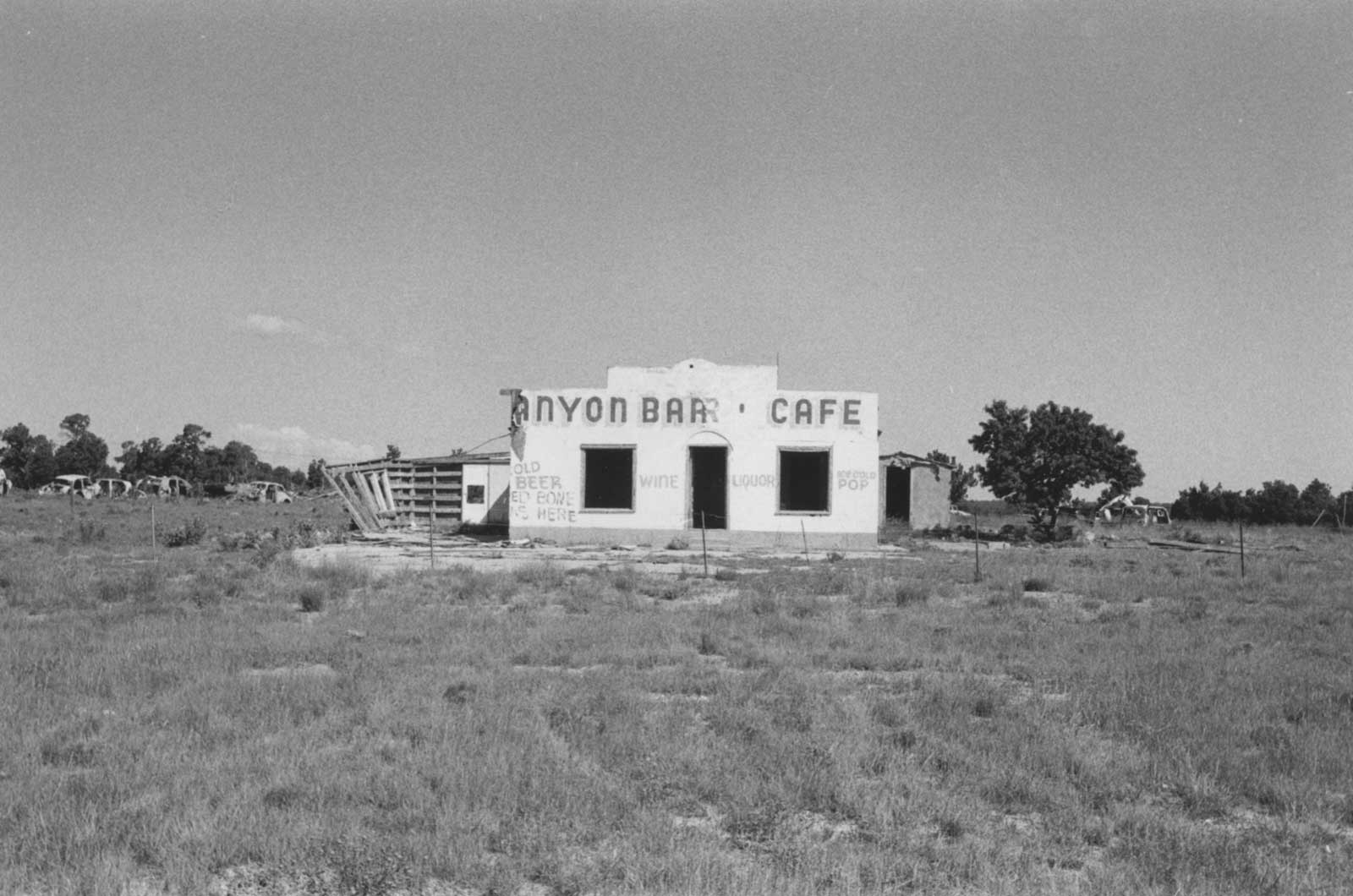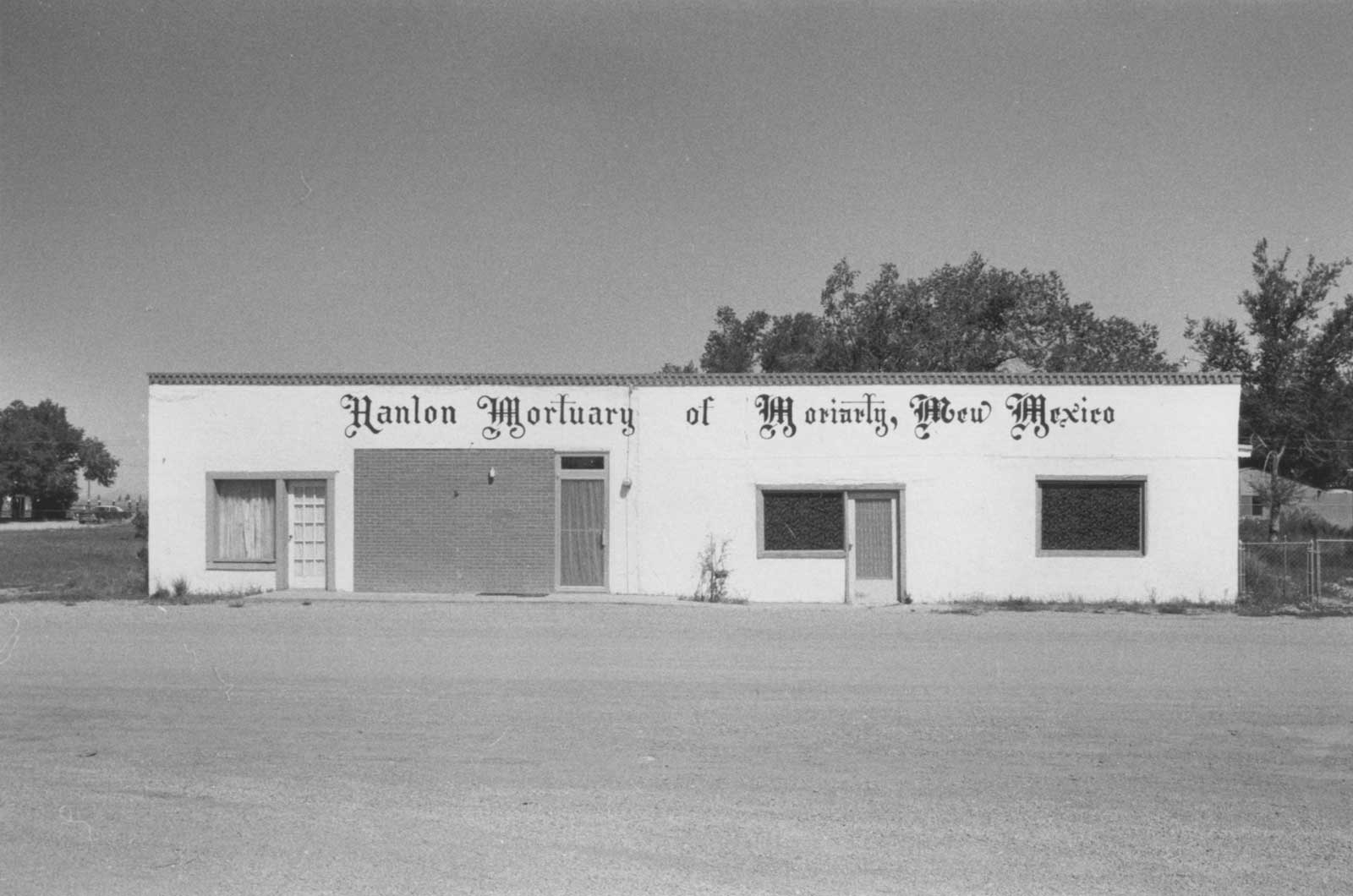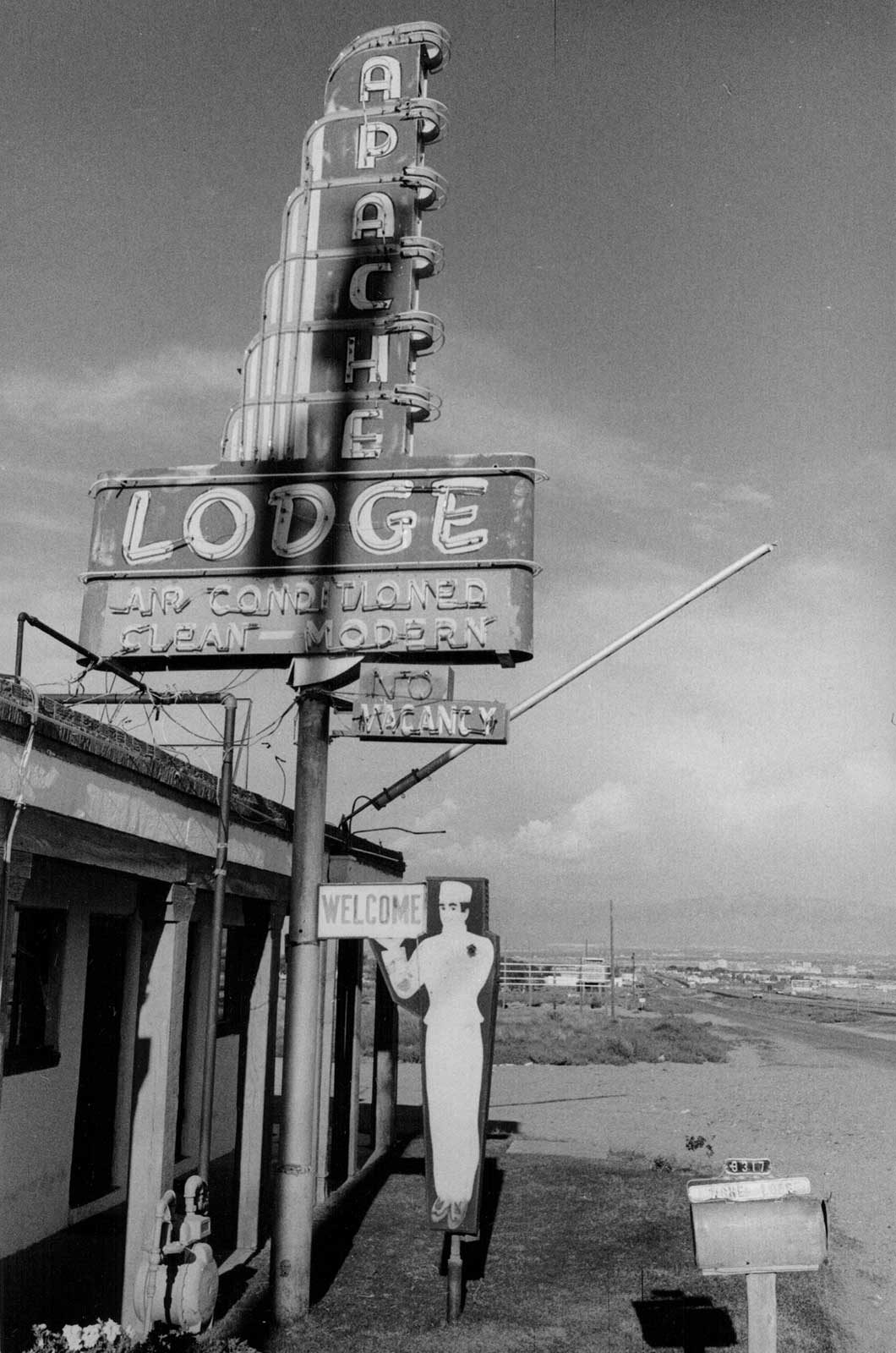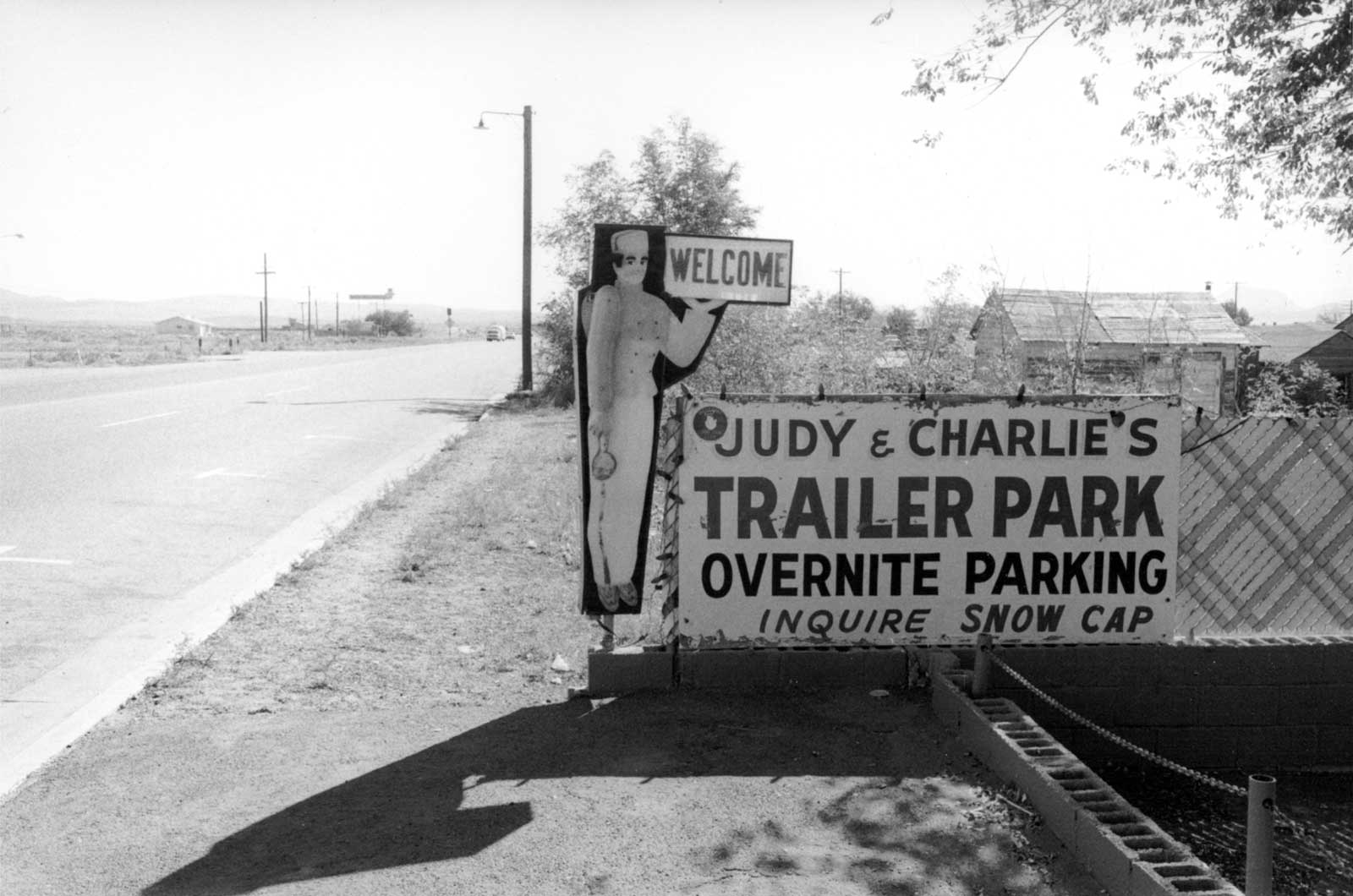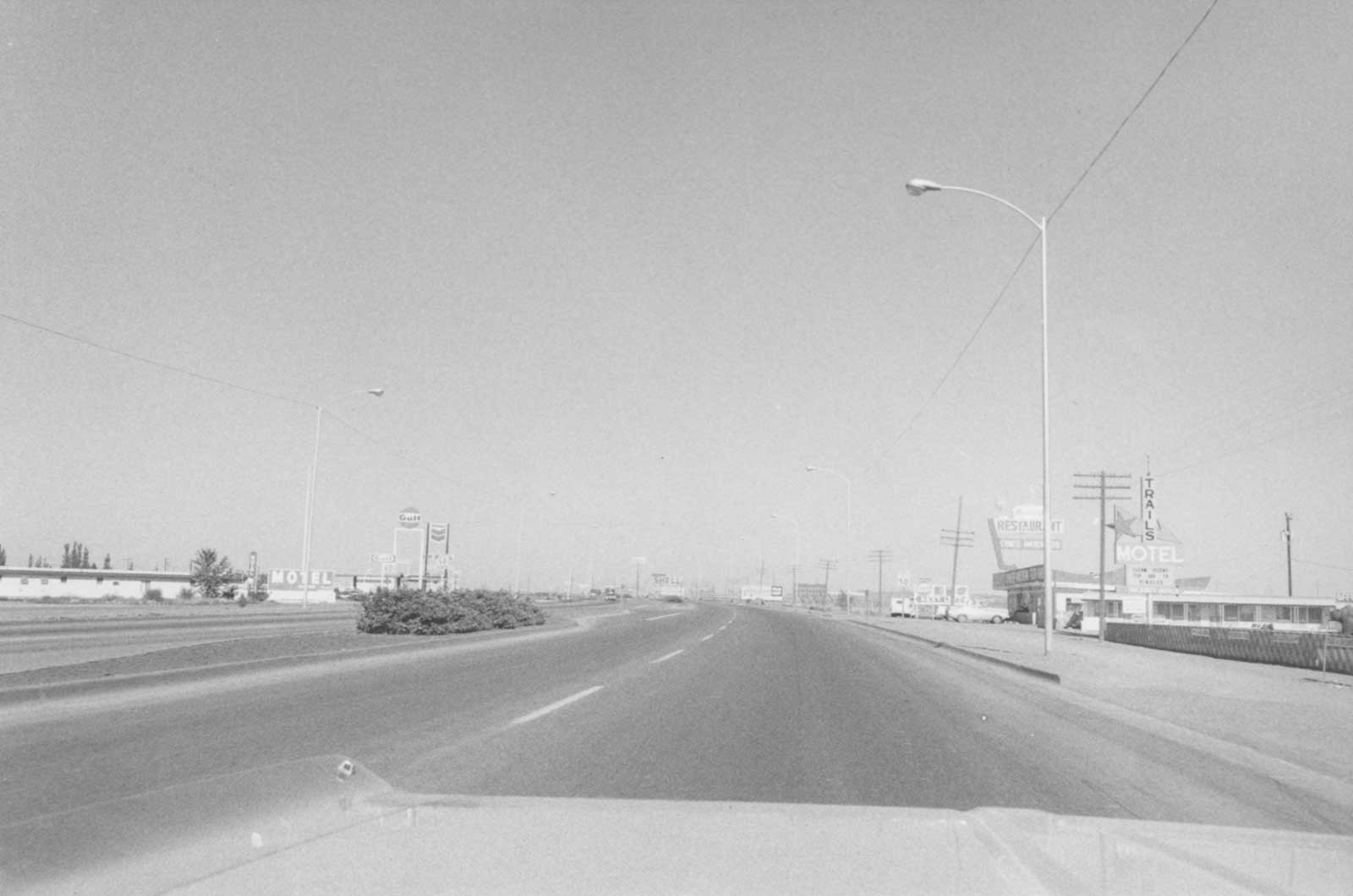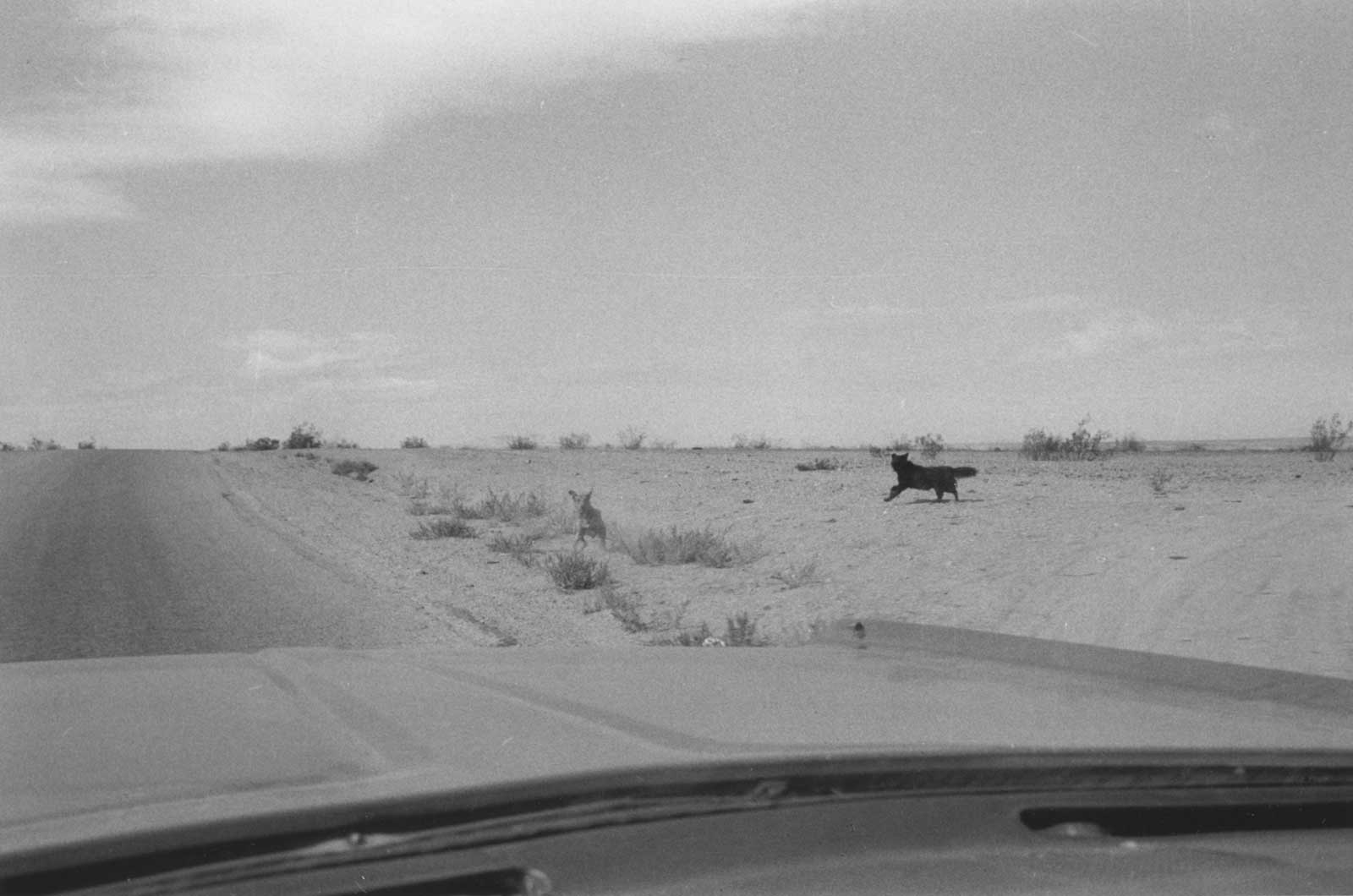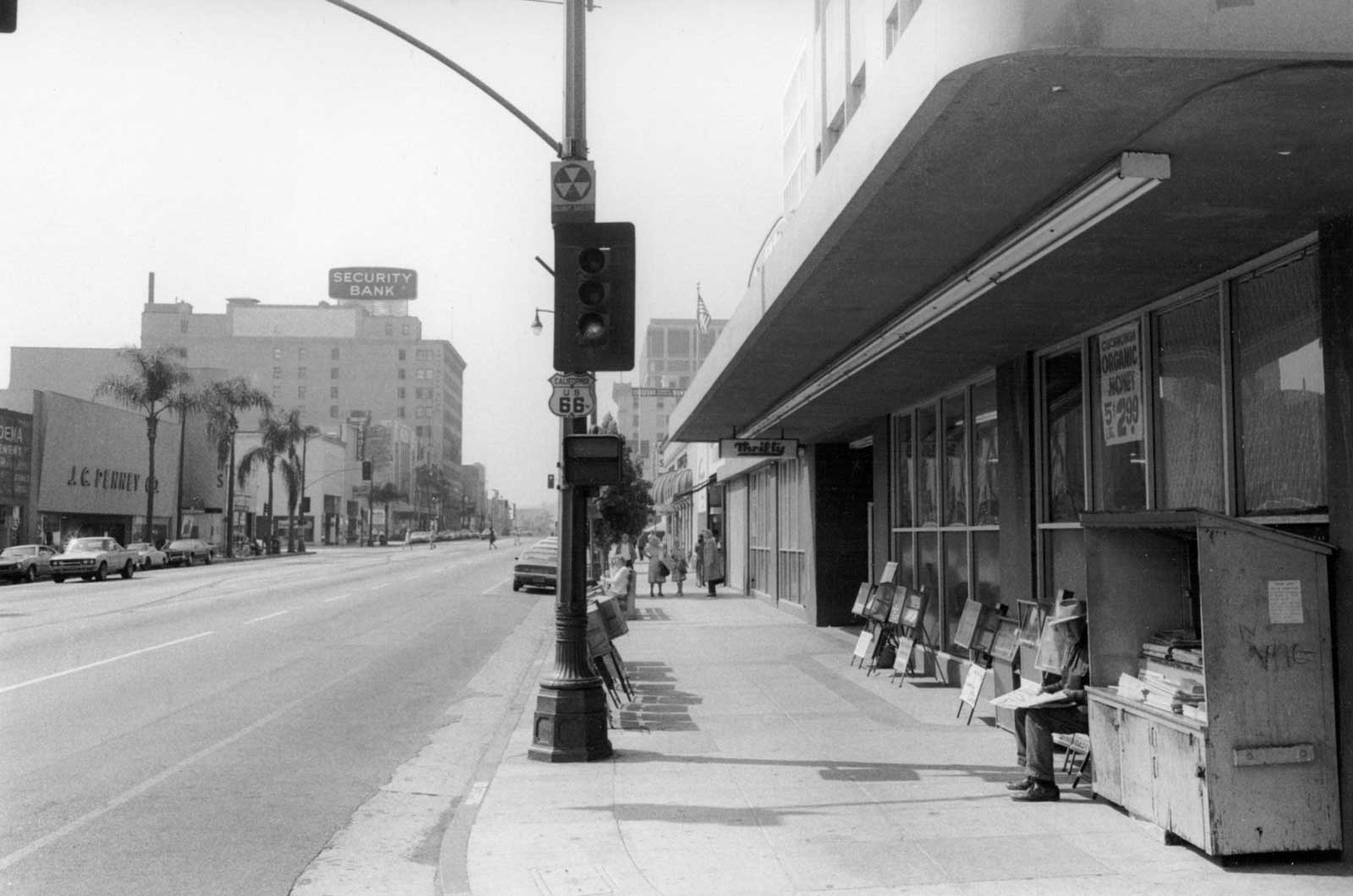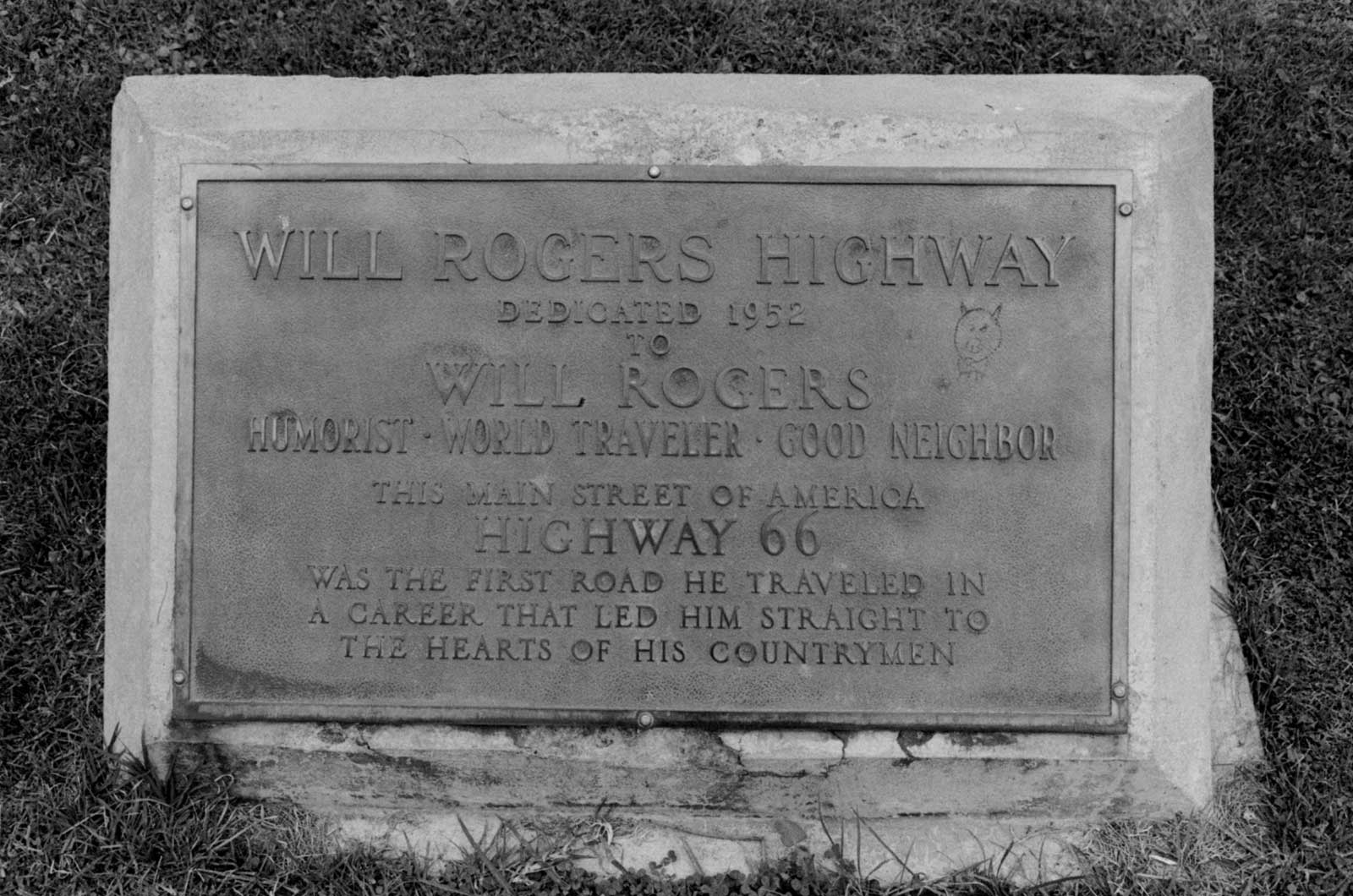Route 66
Chicago to Los Angeles, 1975

From its first sign on Michigan Avenue, Chicago, to its final designation in Santa Monica (a small plaque in tribute to Will Rogers) Route 66 represented a physical and symbolic passage across America. Established as a numbered route in 1926, and paved in 1938, in 1975 it was often obscure and disused. The road was officially decommissioned in the 1980s.
Photographing Route 66 I was immersed in the pursuit of the road itself, not as a documentarian, with a particular insight about the past or the future, but for the pure delight of discovery. Because of that, there were things I didn’t consider photographing, like the towns. What did I miss? The experience of walking and photographing in the streets, signage particular to the town and the time. The loss is historical, the vestiges are gone, a period of time I might still have seen, that I left undocumented.
This early project, though, suggested wider visual possibilities and turned my gaze away from the large circuitous highways toward the downtown areas of towns and cities. Emerging from this personal shift, the documenting of the small-town movie theater, closed and converted, slowly revealed itself as the principal goal of my travels for nearly the next two decades.
Already evident in the Route 66 project, a sociological and cultural transition was taking place in America during these years, with the abandonment of the downtowns, and the move to the malls. I witnessed it with a rising sense of urgency, photographing the surviving traces of a past way of life at the next to last moment before they disappeared.









